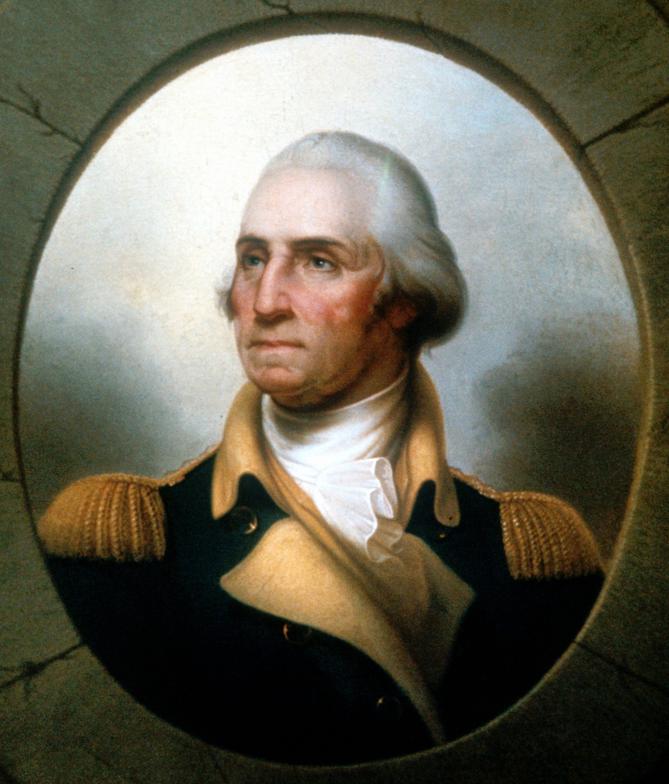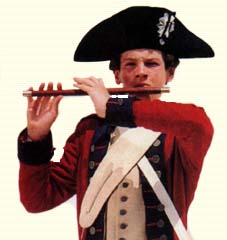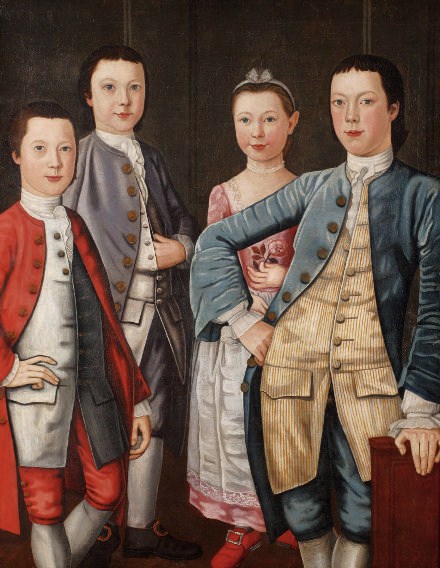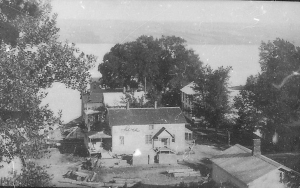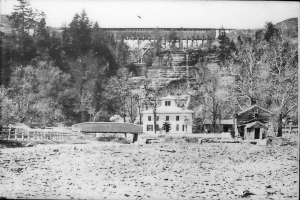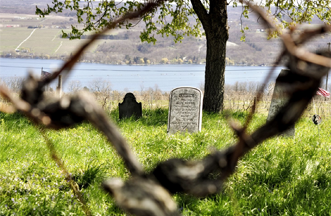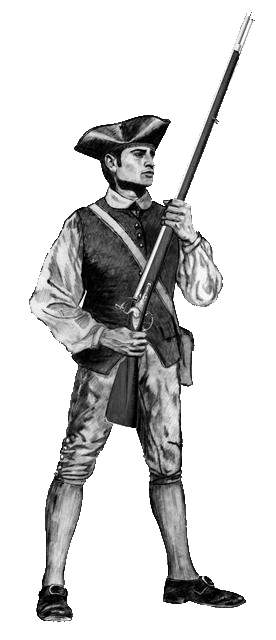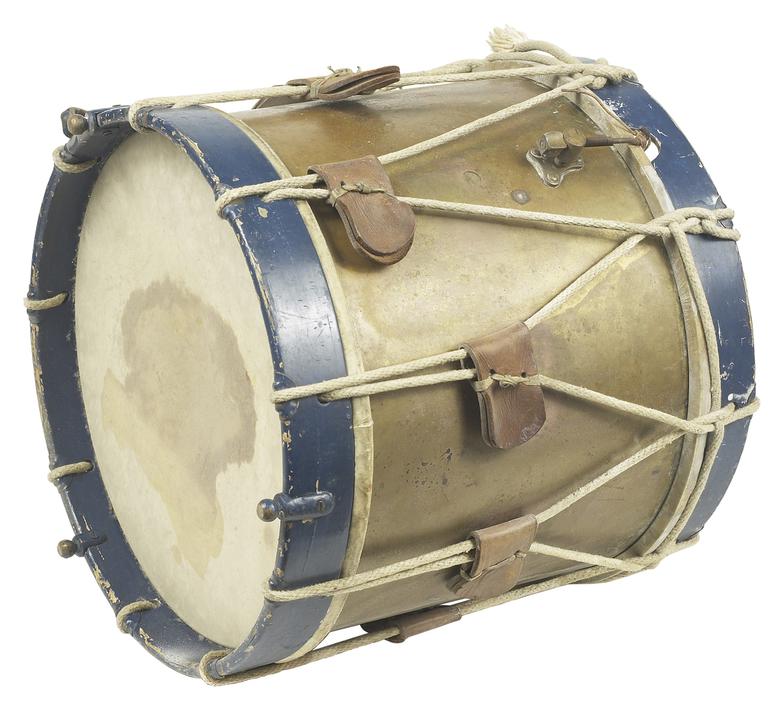The Fulkerson Family Pages
Caleb Fulkerson, Patriot & Fifer
A New Jersey Son
Caleb Fulkerson was the second child and second son born to Philip Fulkerson and Maergrite (a.k.a. Margrita) Farley at Hillsborough Township, in Somerset County, New Jersey, on January 17, 1762. Created by Royal charter on September 12, 1771, from portions of the "Westering District of Somerset County," Hillsborough Township was incorporated by an act of the New Jersey Legislature on February 21, 1798, as one of New Jersey's original group of 104 townships.
On the Fulkerson side of the family, Caleb Fulkerson's grandparents were Joseph Volkerts (twin to his brother, Dirck) and Aeltje Rapalje; his great grandparents were Philip Volkerse and Ann Van Clieft.
Caleb Fulkerson's great, great grandparents were Volkert Dircks, son of Dirck Volckertszen De Noorman, and Annetje Phillips, daughter of Phillip Langelans; and his great, great, great grandparents were Dirck de Noorman and Christine Vigne.
Caleb's seven-years-older brother Joseph (b. 1755) had already enlisted in the "Jersey Line" in the fall of 1775, serving under Captain Polhemus in Colonel William Winds' First Jersey Regiment, traveling as far afield as Fort Ticonderoga in upstate New York.
Caleb had his first taste of the Revolution when he was barely 15 years old, with a one-month enlistment at Bridgewater, New Jersey, in late 1776 or 1777 as a fifer in Captain James Wheeler's company of Colonel Frelinghuysen's militia regiment at Elizabethtown -- a military camp strategically situated to dissuade the British from landing troops along the New Jersey coast.
Under the plan of organization for American forces, each company was to have a captain, 2 lieutenants, an ensign, 4 sergeants, 4 corporals, a fifer, a drummer, and 76 privates.
Caleb returned to military service in 1778, spending nine months in the New Jersey Line of the Continental Army as a fifer assigned to the American outpost at Elizabethtown in Captain John Van Angle's company, Colonel Matthias Ogden's regiment, General William "Scotch Willie" Maxwell's New Jersey brigade. This command had distinguished itself at the battles of Brandywine and Germantown in the second half of 1777.
In mid-June of 1778, British General Clinton's 12-mile-long army and wagon train crossed the Delaware and began marching across New Jersey. George Washington started moving his army to intercept this column, and meanwhile sent Maxwell's brigade to impede the British by destroying bridges and felling trees across roads. Washington's attack on the British army began on 28 June 1778 near Monmouth, New Jersey.
In Caleb's 1832 pension application, he stated that most of his brigade was held in reserve during the Monmouth battle and not called upon, and that only their artillery participated in the fight. The Battle of Monmouth was fought in what is now Freehold, New Jersey.
An August 1778 payroll list for the 41 officers and men of this company showed Caleb serving as a fifer and his brother Joseph serving as a sergeant. Caleb was paid 2 pounds, 15 shillings. Joseph received one pound more.
After the Revolutionary War ended, Caleb returned home to New Jersey to become a tailor. He was on the tax rolls in Bridgewater Township, Somerset County, in July, 1785 and again in August, 1786.
Born in 1732, George Washington was 30 years older than Caleb Fulkerson.
Caleb and his wife Deborah are buried in a plot overlooking Seneca Lake, a few hundred yards west of the Fulkerson Winery, on State Route 14 at Dundee, NY.
Looking east. Store and lumber yard on Glenora Point, Seneca Lake, may years ago. The Point, now residential, was once part of the Fulkerson farm.
Looking west from Glenora Point. House, waterfall and covered RR trestle (1858-1896). Caleb sold this land by 1812. Photo probably from 1870s, as house burned in 1881. Old RR tracks still cross the current Fulkerson farm.
Photo provided by Sayre Fulkerson
Photo provided by Sayre Fulkerson
Photo from Fulkerson Winery gallery.
This 1768 portrait of The Rapalje Children, by John Durand, gives us a glimpse of what Caleb and Deborah may have looked like as children. These children were likely cousins of some degree to Caleb.
From left to right in the portrait above are Garret (b. 1757), George (b. 1759), Anne (b. 1762), and Jacques (b. 1752). It can be difficult to imagine our ancestors as real people, as there was no photography in colonial times, but there were many painters in the American Colonies besides John Durand, including John Mare, Abraham Delanoy, and Lawrence Kilburn. It is unknown what family connection John Durand may have had with a later American painter, Asher Brown Durand.
Click on our graphics--nearly all are links!
Click on our graphics--nearly all are links!
Commentary authored by Bob Fulkerson, from his site Fulkerson.org, with edits and added info and links in 2016.
Click this patriot to read more about Caleb.
Click drum to see Caleb's Revolutionary War Pension papers.

